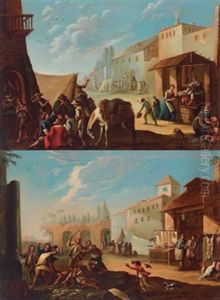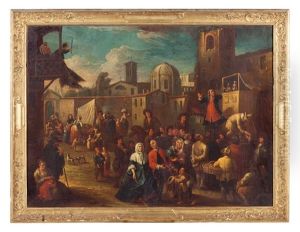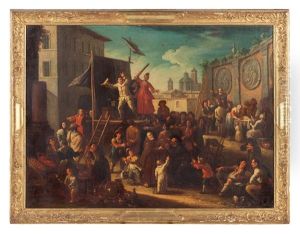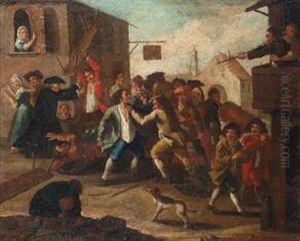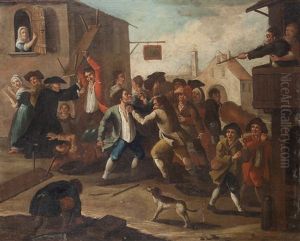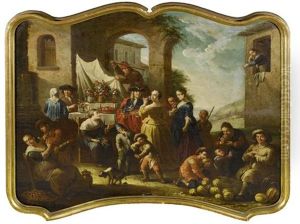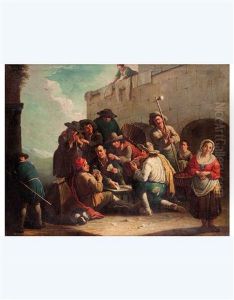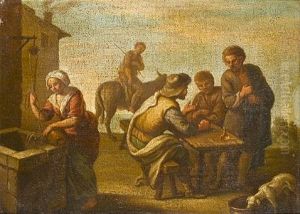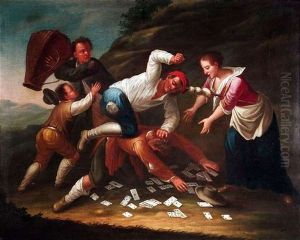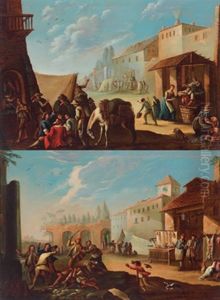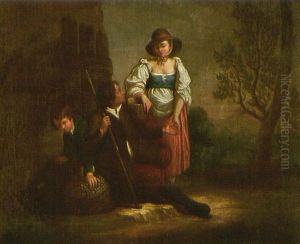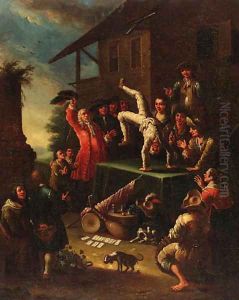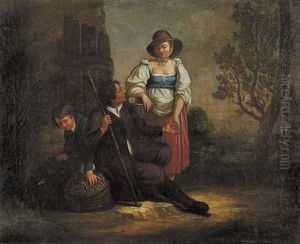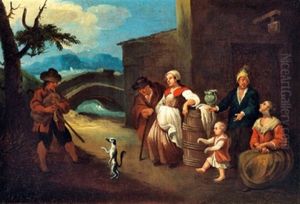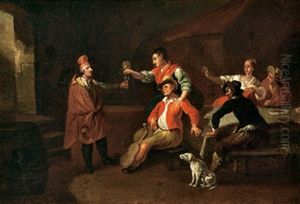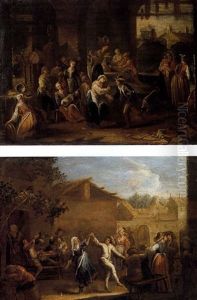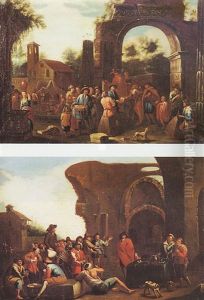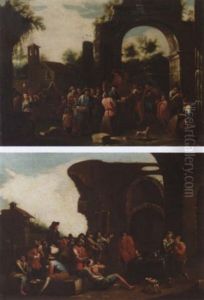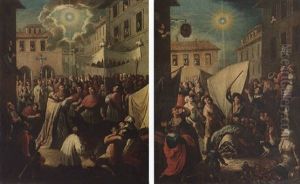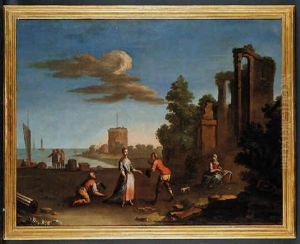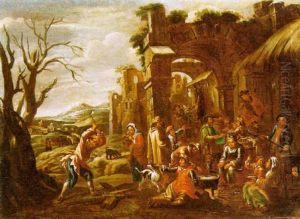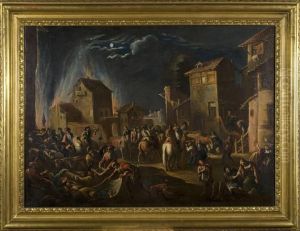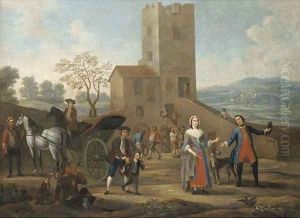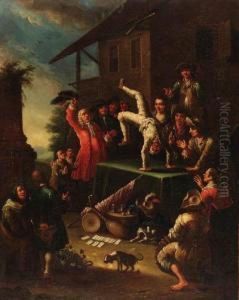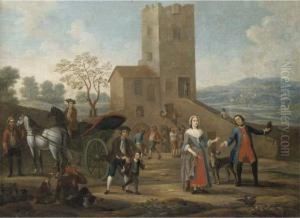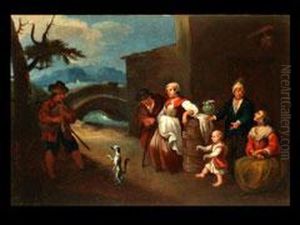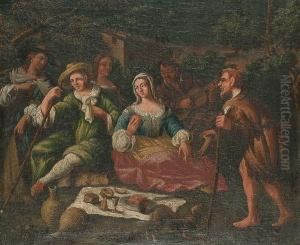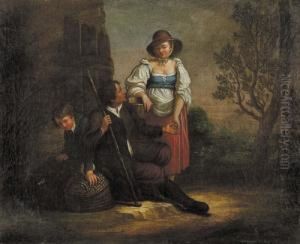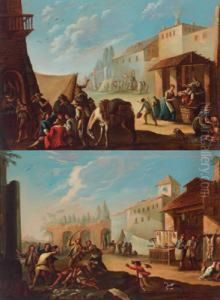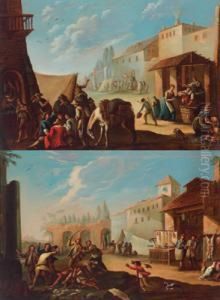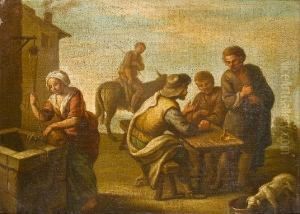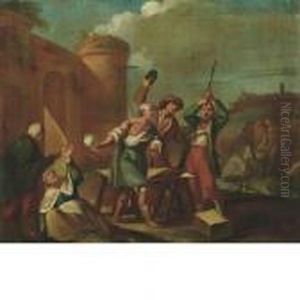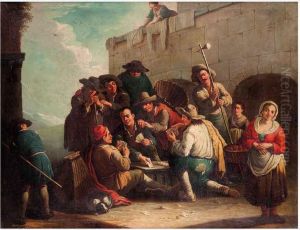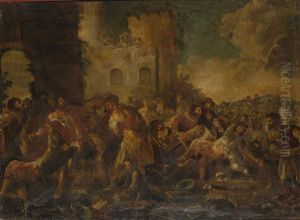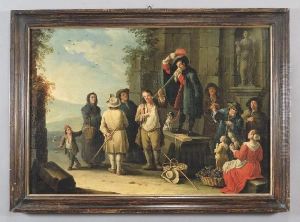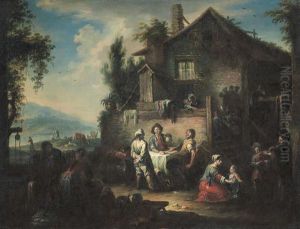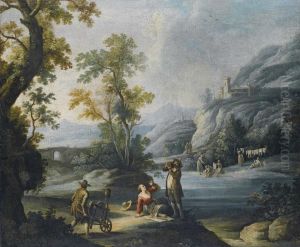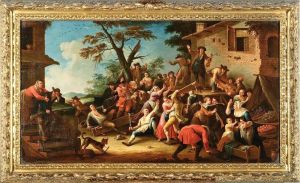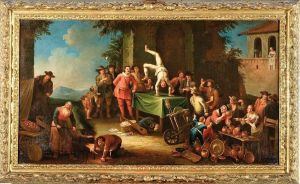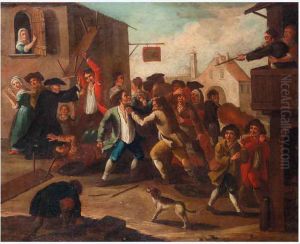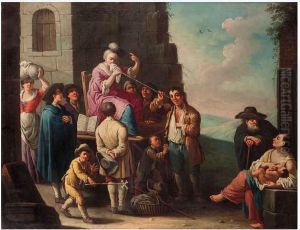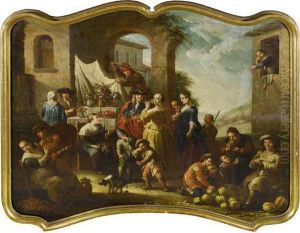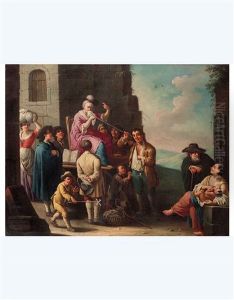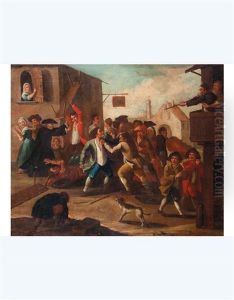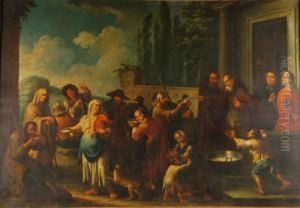Giovanni Michele Graneri Paintings
Giovanni Michele Graneri was an Italian painter born in 1708 in Turin, the capital city of the Duchy of Savoy, which later became part of Italy. Graneri is best known for his detailed and lively depictions of genre scenes, often with a comedic or satirical edge. These scenes typically illustrated everyday life, festivals, and carnivals of the 18th-century Piedmontese society.
Graneri received his early training in Turin, where he was influenced by the Baroque style that was prevalent during that period. He was particularly inspired by the works of Flemish painter David Teniers the Younger, whose genre scenes were highly popular in Europe at the time. Graneri's paintings often reflected a similar attention to detail and a penchant for capturing the vibrancy of daily life.
Throughout his career, Graneri developed a distinctive style that combined the grandeur of Baroque art with the more intimate and informal aspects of genre painting. His works are characterized by their dynamic compositions, rich color palettes, and the inclusion of numerous figures engaged in various activities. He had a talent for creating a sense of movement and liveliness, which made his paintings particularly engaging to viewers.
Despite his success as a genre painter, Graneri was also skilled in other types of painting, including religious subjects and landscapes. However, it was his genre scenes that garnered the most acclaim and defined his artistic legacy.
Graneri's paintings were collected by the aristocracy and the upper classes in Turin and beyond. His works contributed to the cultural life of the Duchy of Savoy and reflected the changing tastes and interests of the time. Unfortunately, Graneri's life was not well documented, and many details about his personal life and training remain obscure.
Giovanni Michele Graneri died in 1762, leaving behind a body of work that continues to be appreciated for its charm, wit, and historical value. His paintings offer a window into the world of 18th-century Italy and provide insights into the social customs and entertainments of the period. They remain of interest to art historians and collectors alike, and his contributions to the genre of scene painting are still celebrated today.
